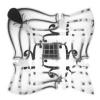Leaderboard
Popular Content
Showing content with the highest reputation on 11/15/2015 in all areas
-

Computers for Composing
timaeus222 and 3 others reacted to prophetik music for a topic
i'm heeeeeeere! neblix shot me a pm pointing out that i have info for people who need it =) in short, if you're willing to spend 700 or 800 bucks, build your own, or have someone do it for you. you'll get roughly the same numbers for your CPU and RAM, but you'll get *way* better quality in the mobo, PSU, etc. that's the parts that let the system run for years and years without a hiccup. the primary difference between these two machines is the discrete card in the dell, along with the dell having bluetooth, and the xps name itself (which is still a pretty respected name in big-box machines, dell dude aside). i would disagree that either'd be able to handle a big session, though, as 8gb is not much when you get into bigger sample sets. i can max out 8gb pretty easy doing any orchestral track, and the last time i did a rock track i ran that over pretty fast too with a few instances of guitars and the drums. building a computer is rarely more expensive for the same level of quality (it's usually vastly cheaper). W10 is not the daw i'd be using right now (W7 is, still, although from a perspective of W8 vs W10 I'd go with 10). having an external audio interface is super nice (i had a saffire pro 40 when i was doing a lot of mixing), but not required. i disagree with virtually everything supercoolmike said - sorry, i think you're still super cool =( RAM is one of the most important things at allowing your system to scale to bigger projects, arguably even more than CPU since you can always bounce tracks to wav and just load them after you've got them iced. additionally, raw straight-line speed on a cpu isn't as important as a good multicore setup, although this is less of an issue nowadays with everything being quad at a cheap price point. the thing is, RAM's cheap enough that you can just drop in piles of it and it doesn't matter. the cpu's the thing that's hard to upgrade if you don't plan ahead with your choice and what is offered in the slot you pick. here's my requirements for a good mixing pc: -discrete OS drive -8gb ram *minimum*. buy it in 8gb sticks so that you can expand easily...the bonus in speed from dual-channel 4gb sticks ain't worth it for the loss in potential slot use -big quad for the CPU. plan on spending as much money up-front on this so that you don't have to upgrade later -a good cpu cooler, since you're going to stretch the cpu most of the time newegg's site's having an issue right now with searching for components, but if i was spitballing it, this's what i'd see. cpu: i7-4790, 310$ (might as well pick what those machines you looked at had). 30$ more gives you a 4ghz cpu with an unlocked multiplier. cpu cooler: hyper 212 evo is my go-to, 35$ case: cheap micro-ATX like the tx-381, 40$. and a sweet handle, too! =D mobo: H81-based micro ATX mobo, 75$ range psu: corsair CX500, 45$ ram: 40$ for 8gb is standard os drive: either a samsung evo or a kingston v300 (evo for performance, v300 for cost), roughly 120gb is good for an OS drive on a pure music machine. figure 80$ for the evo or 50$ for the v300 sample drive: 1-2tb internal drive - i only buy WD, usually a Black model. 70$ for the 1tb and 120$ for the 2tb. going with the v300 and the 1tb internal, and 8gb of RAM, that's 665 or so for the parts for a machine that's got waaaay higher quality parts in it than those bigbox versions, and it's got a lot more features (like the aftermarket CPU cooler, the OS drive, and a better sample drive). you'll just need a flash-drive with the windows install disc on it is all, or drop another 20$ for a dvd burner. if you want to talk specifics for a custom system, ping me and we can chat. i can just about always make a system work for a good price.4 points -

Heart of a Gamer: A Tribute to Satoru Iwata - History
Eino Keskitalo and one other reacted to The Damned for a topic
WAV files are handed in, Liontamer has the link. Only things remaining are finishing the artwork and making the webpage.2 points -

Game Audio Analysis YouTube Series
T- Ape reacted to Mike Thalbain for a topic
Hey fellow OC ReMixers! I wanted to share the first episode in my new YouTube series, Game Audio Analysis. As a composer and sound designer for video games, I'll be using these videos to share knowledge, tips, and tricks for other aspiring game audio professionals. I'm starting out with some basic ideas, but I'll gradually be moving on to topics that are more advanced. New episodes will be posted weekly! If you have any questions or just want to get in touch, leave a comment below. You can also reach out to me via PM, Twitter, and my website. Thanks guys, and I'm curious to hear what all of you think!1 point -

Heart of a Gamer: A Tribute to Satoru Iwata - History
Themysteriousassassin reacted to Drawn by Dai for a topic
Yupyup that can be done easily. I can put that in no problem. All these last minute edits are a regular thing and always to be expected, good thing I always keep my PSD's!1 point -
Heart of a Gamer: A Tribute to Satoru Iwata - History
timaeus222 reacted to Brandon Strader for a topic
It looks great but I know Larry is going to edit it because it doesn't say "An OverClocked ReMix Album" on the front1 point -

PRC309 - Climbing the Larai Cliff (Illusion of Gaia)
Drawn by Dai reacted to Esperado for a topic
Ive got one cooking, should be done in time!1 point -

Heart of a Gamer: A Tribute to Satoru Iwata - History
Black_Doom reacted to Drawn by Dai for a topic
I'm still not sure what the preferred layout is. Here's the CD label and full res pattern for a printable sleeve (both with 3mm bleeds) but I don't know whether scales for a jewel case are required as well. I've PM'd Liontamer to see whether he has any specs but no reply as yet. I guess he's off taming lions . Also I still need an upload link. If anyone can help me out with that I'll buy you a pack of gummy bears (I won't buy you a pack of gummy bears) Cheers!1 point -

Need Source Tune like Intense Color Remix
Garpocalypse reacted to Esperado for a topic
That myst soundtrack! hnnnggg1 point -
OCR03256 - Super Mario Land "Seven Pipes to Heaven"
Nostalvania reacted to Trinity Dragon for a topic
Honestly, if I had never heard the source material, I would never have known that there was original composition in there. It was strung together so seamlessly.1 point -

Heart of a Gamer: A Tribute to Satoru Iwata - History
Brandon Strader reacted to Drawn by Dai for a topic
Sooooo... This is what I have for the back cover: The CD label will looks similar, except rotational and without the tracklist EDIT: Subject to change of course1 point -

Logic or...?
Philip Robinson reacted to Nabeel Ansari for a topic
I have a rule for people getting started, and that is don't get caught up in what's the best and what sounds like it has the most value (features, sound quality, etc.) When you're getting started, you need a baseline. The baseline is the set of instruments (or even just one library, like Albion, Symphobia, EWQLSO) that you learn how to use and you're "set". Meaning you can write orchestral music using them, and that's your fallback level of quality for mockups and such. Your baseline can be feature-rich and detailed (the Hollywood series) or incredibly dumbed down and easy to use (like ProjectSAM Orchestral Essentials). Once you have your baseline, and you are consciously feeling like "I'm trying to write music with a certain sound but my current set doesn't let me do it, but that other set will", only then should you start buying more libraries. For instance, let's say my baseline strings are CS2. CS2 is amazing, but it has no divisi. If I'm working on something and I need to write divisi, that's when I'm able to justify buying a library with divisi (like LASS or NISS). If I like to centerpiece a violin in my orchestra, I invest in a solo violin like Embertone Friedlander. NEVER BUY SAMPLE LIBRARIES OR INVEST INTO FEATURES BECAUSE YOU THINK YOU'RE SUPPOSED TO HAVE THEM OR "MIGHT USE THEM LATER ON". This is a slippery slope that never financially pans out in your favor (it may creatively, but I only give practical advice). You end up buying a metric ton of shit you never use in your music, and keep buying more when you get excited about new releases from your favorite companies to build up your "library". Don't "build up your library". I took that stance with purchasing stuff and I have bought so many thousands of dollars worth of tech I don't use and rarely have ever used outside of a single project. It's one of my biggest life regrets, actually, to be tangentially dramatic. It burns mostly because most developers employ a no resale policy, so I can't sell something when I'm done with it. It digitally follows me and stays on my Kontakt drive forever, and ever, and ever, and ever... Start with your baseline, and buy something when your baseline doesn't cut it. As you absorb more stuff into your baseline, you use it more often because it's the sounds you really wanted, and it becomes your new baseline. That's why amazing computer orchestrators layer different libraries. They didn't learn "layering tricks" from Daniel James on YouTube then go out and buy 3 different string libraries to stay in the game; they went through the grueling process of deciding their current libraries weren't giving them the sound they wanted, then visiting the market to find who developed a library for it.1 point -

Computers for Composing
timaeus222 reacted to Flexstyle for a topic
There's not really a difference between those two. There might be differences between manufacturers in terms of warranty, build quality, etc. (and I can tell you that Dell builds all of their computers very solidly, you can't go wrong with them right now), but really it's going to boil down to what's the best deal you can find at the time you decide to buy. Or you could save even more money and get something purpose-built by doing it yourself.1 point -

Arcadia Legends - History
Eino Keskitalo reacted to Drawn by Dai for a topic
Just putting my bit in here, would you be interested in using my services as an artist? I'm currently wrapping up the artwork for the Satoru Iwata tribute album, and though I don't want to corner the market as it were, I'd be more than interested in helping out visually with Skies. How could I not, with such an iconic game? You can take a look at some of my artwork on my online portfolio (though bear in mind, a lot of the site is still under construction): http://www.davyowen.com/illustration Cheers Odai1 point -

OCR Talkback Live! (Saturdays, 9PM EDT!)
YoshiBlade reacted to Cash for a topic
Yeah, I think I'd like that. I watched most talkbacks, but sometimes I didn't bother because I was busy or wanted to do other things at the time. I probably would be more likely to catch a talkback if it were more of a special occassion, like a monthly format. Plus I'd imagine it would be a lot easier to organize and find available remixers.1 point
